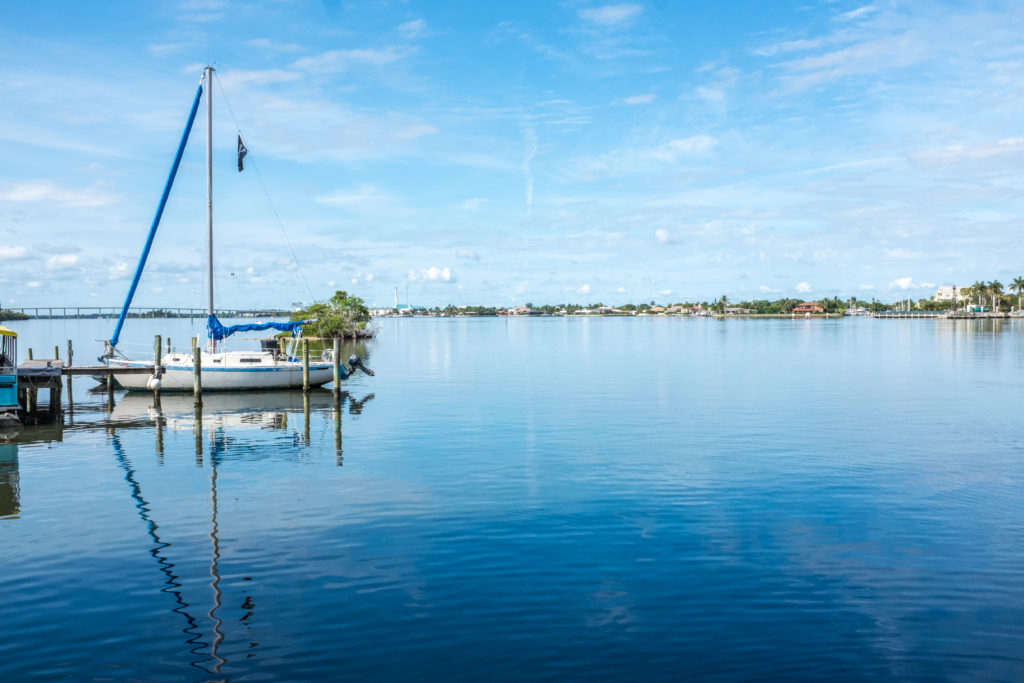Three local endeavors to improve the health of the Indian River Lagoon alongside the North Barrier Island are among 15 projects earmarked for $9.4 million in proposed federal funding to be spent over the next three years.
The Indian River Lagoon National Estuary Program (IRLNEP) partnered with 10 restoration organizations to pitch the projects to National Oceanic and Atmospheric Administration (NOAA). The focus is on restoring fish habitat, enhancing ecosystem function, and protecting the Indian River Lagoon by recovering and restoring seagrasses, oysters, and living shorelines.
The funding is provided under the Bipartisan Infrastructure Law and Inflation Reduction Act. Final approval and distribution of the grants will occur this fall, officials said.
Local projects include seagrass restoration efforts led by Indian River County’s Natural Resources Department in Big Slough, a 20-acre parcel south of the Sebastian Inlet, and at Preachers Hole also roughly 20 acres, north of the Wabasso Causeway across from Orchid’s White Pelican Drive.
The third local project is managed by Indian River Land Trust at its 111-acre Bee Gum Point bird sanctuary and mosquito impoundment, located at the extreme west end of Fred Tuerk Drive in Indian River Shores. Efforts there will focus on seagrass restoration, expanding living shorelines and oyster reefs, rebuilding mangroves, and improving water flow between the impoundment and the lagoon.
“We’re excited to be part of the partnership with IRLNEP and the other nine agencies involved in seeking this funding,” said Melissa Meisenberg, Senior Lagoon Environmental Specialist with the county’s Natural Resources Department. “It is a wonderful opportunity to advance habitat restoration and recovery of our estuary.”
County staff will provide in-kind support for the projects and will maintain them afterward, Meisenberg said. Sea and Shoreline will be the contractor for the seagrass restoration projects, she said.
Approximately 12.8 acres of new seagrasses will be planted in the Big Slough parcel, with about 10 acres planted in Preachers Hole, Meisenberg said. Seagrass plantings are started onshore, and when they are mature enough, are packed into planting units and planted in the lagoon, she said. The newly planted areas will be protected from intrusion to allow the grass beds to mature, she said.
“Seagrass beds are the nurseries for the lagoon,” said Kathy Hill, Deputy Director for IRLNEP. “There has been great recovery in the Mosquito Lagoon, but seagrasses are pretty decimated throughout the central lagoon from Melbourne south to Fort Pierce and even further. These projects could really jump-start recovery.”
Indian River Land Trust purchased the Bee Gum Point property in 2011. Situated on the Atlantic Flyway, a major north-south flyway for migratory birds, the site is a protected wetland habitat and sanctuary for a wide variety of native bird species. The site also features saltwater ponds that are home to seagrasses and diamondback terrapins and also serves as the birthplace of sportfish such as snook and tarpon.
Water levels in the impoundment areas of Sea Gum Point are controlled by the Indian River Mosquito Control District. The impoundments are connected to the lagoon by culverts which are open to natural tides most of the year to allow for the free exchange of water, nutrients and organisms. During the summer months, the impoundment area is kept flooded to minimize the amount of exposed mud – which is where saltwater mosquitos lay their eggs.
However, blocking the free flow of water to the lagoon traps certain species, such as juvenile fish and crabs, and prevents them from entering the lagoon for the next cycle of their lives, said Dave Fuss, Director of Land Stewardship for Indian River Land Trust (IRLT).
After acquiring the property, IRLT constructed additional culverts to increase the exchange of water between the impoundments and the lagoon, Fuss said. The NOAA grants will enable them to install more culverts, along with an electric pump to assist in the exchange of water, he said. IRLT will also install aeration systems to freshen the stagnant water during the summer months, Fuss said.
The land trust has hosted several research projects, including a study of how fish populations and diamond back terrapins use the impoundment areas as a nursery, Fuss said. The terrapin is considered a vulnerable species – both because of habitat loss and because they were the main ingredient in turtle soup, widely consumed in the early 1900s.
Bee Gum impoundments also are home to widgeon grass, a variety that once thrived in the lagoon when the water quality was better, Fuss said. The hope is to repopulate the lagoon with widgeon and other grasses, he said.
The project will also improve the condition of western shoreline along the lagoon, which has suffered erosion from boating wakes, storms and other factors, Fuss said. “We’re looking to stabilize that shoreline by introducing natural breakwaters made of shells and other materials that oysters can grow on, along with planting mangroves,” he said.
Staff from both the Land Trust and the Mosquito Control District will contribute time and labor to these projects, along with volunteers, Fuss said.
“This grant seeking project represents the first step in assembling an ecosystem-wide community of restoration practitioners for the Indian River Lagoon, Florida,” said Duane De Freese, Executive Director of the IRLNEP.
More than $1.3 million in matching grants will be provided by the Florida Fish and Wildlife Commission and St. Lucie County’s Environmental Department. Additional partners include Bethune-Cookman University, Brevard Zoo, Florida Oceanographic Society, Indian River State College, Riverside Conservancy, St. Johns River Water Management District, and the University of Central Florida.

